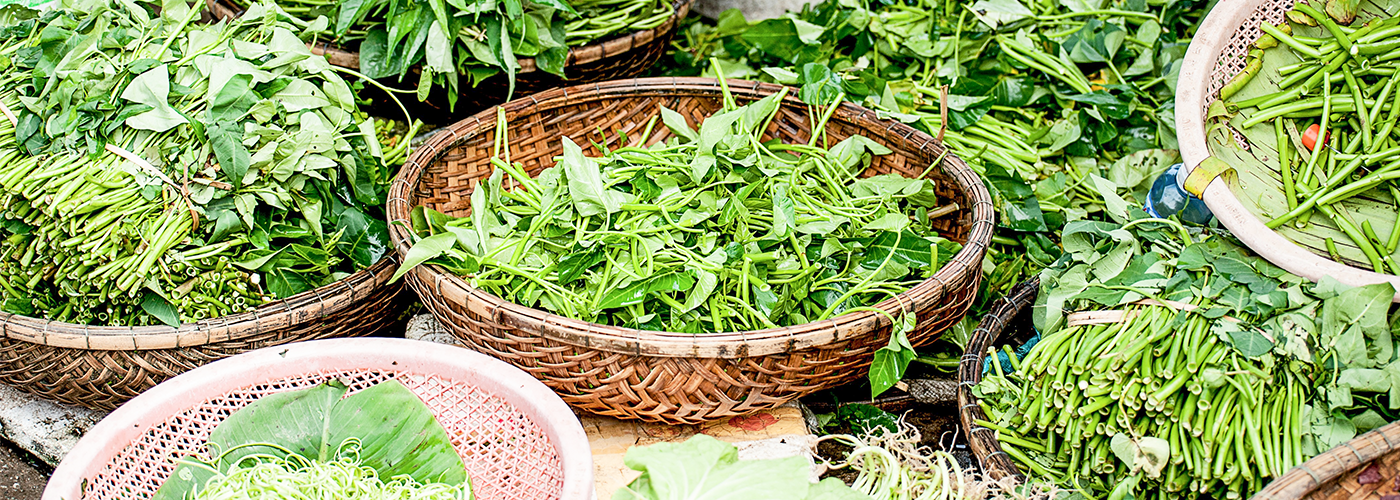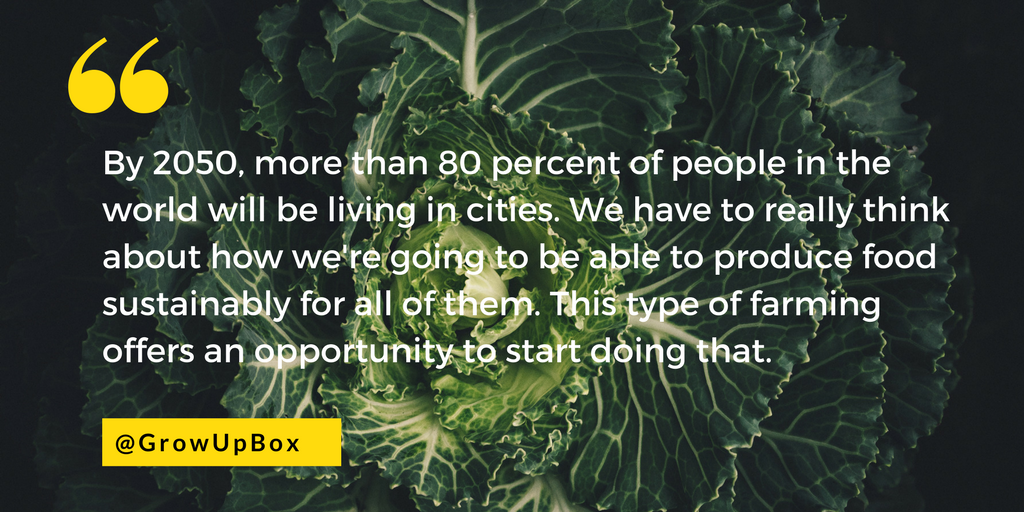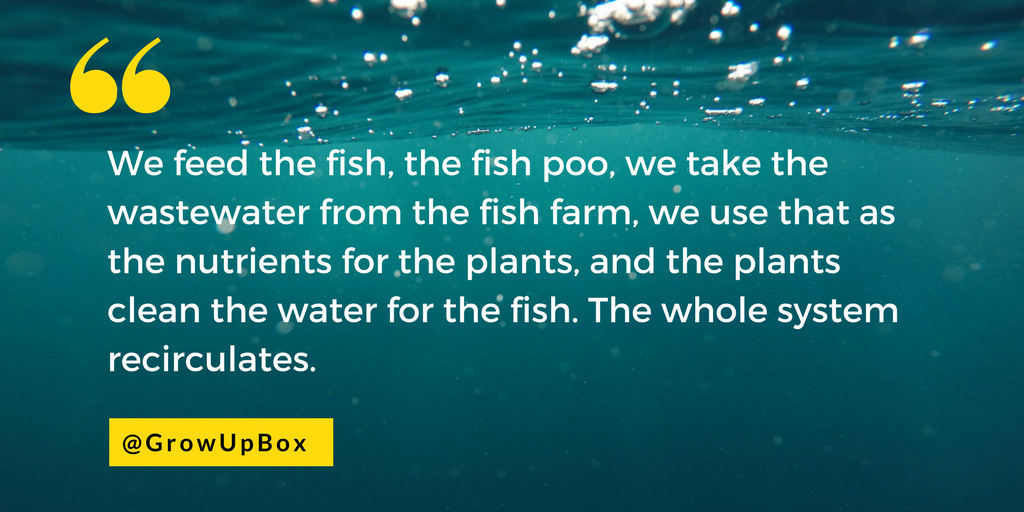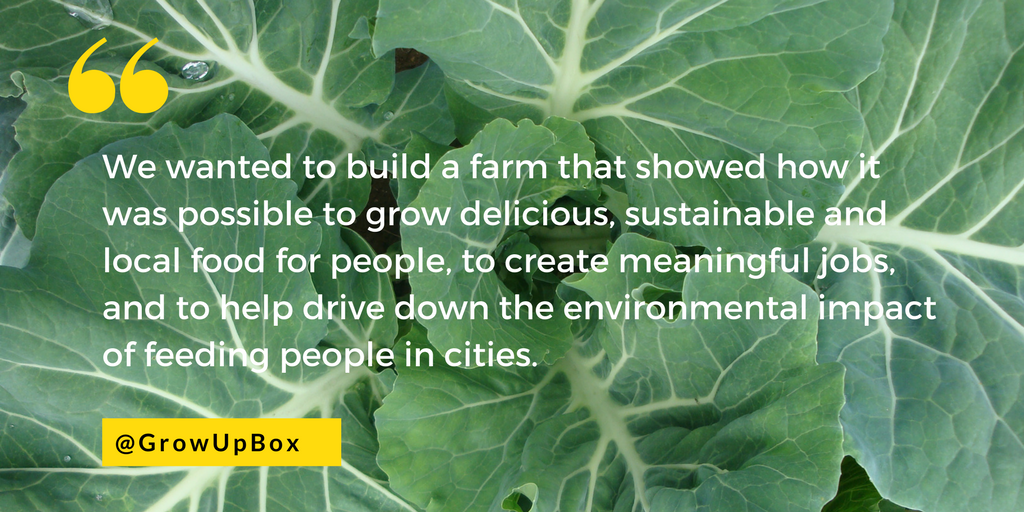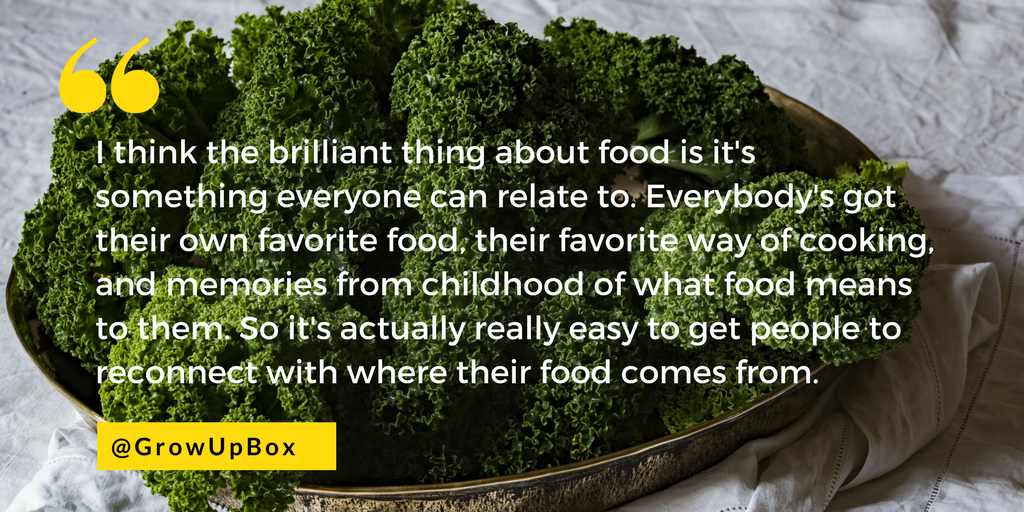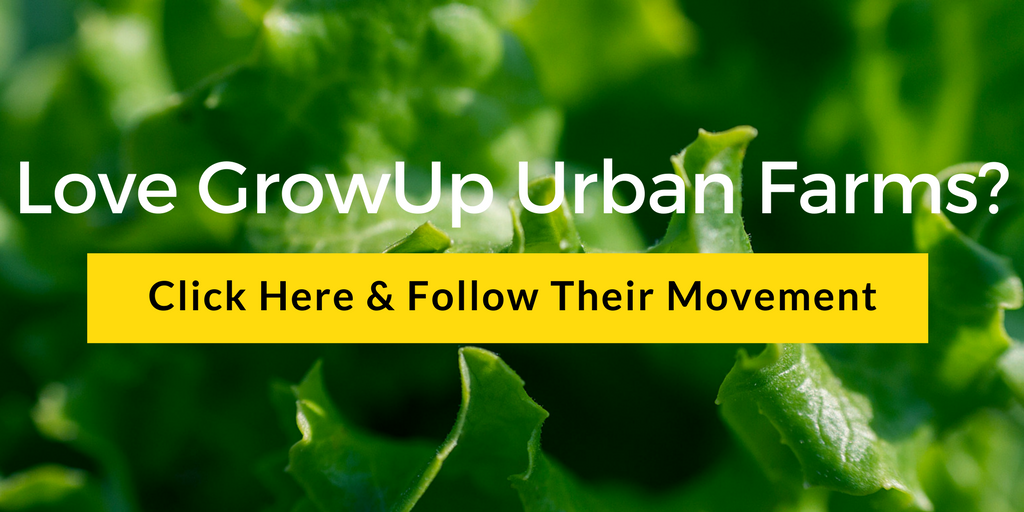In the twenty-first century, people are moving to cities at an alarming rate. By 2050, nearly three-quarters of the world will reside in urban areas, especially in places across Asia and Africa. As they stand, cities remain ill equipped to absorb the increasing pressures on sectors like transportation, health care, and food.
Traditional agriculture boasts its own problems. The sector alone consumes around 70 percent of the world’s freshwater and is responsible for over 20 percent of greenhouse gas emissions. An unsustainable supply coupled with unprecedented demand requires us to reimagine how people access affordable and nutritious food.
Luckily, some companies are a step ahead. GrowUp Urban Farms, a London-based company founded in 2013 by Kate Hofman and Tom Webster, produces fresh fish, micro greens and herbs year-round in unused urban spaces – using both aquaponic and vertical growing technologies.
Unreasonable visited one of GrowUp’s farms to see the aquaponics system in action. While there, we spoke with Kate about the global food system, job creation, and the power of fish poo.
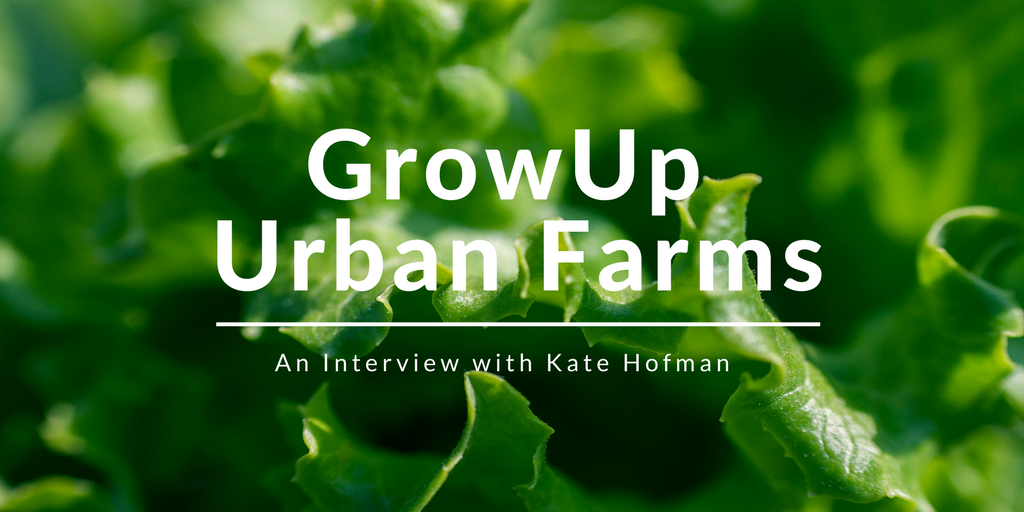
Kate, I have a fun question to start. What were you like as a kid? Any signals that you might be entrepreneurial from your childhood endeavors?
K: I really don’t know. As a child, I was probably not that entrepreneurial. I was very good at following rules and doing what I was told, and I didn’t really get into trouble. I did very well at school; I really liked school. I didn’t think I wanted to run my own business. I mean, it never occurred to me that that is something that I might want to do or that might be a good idea.
When did you first become interested in agriculture or growing food?
K: I’ve always been really interested in food and sustainability. I think when I first started working, I started to really think about what impact business had on the world – and maybe the good impact that it could have, but also the negative impact it was having. Then, that combined with learning a bit more about what some of the problems were in the agricultural system got me really interested in the idea that maybe there was a different way of doing things.
The problem with the food system is that people are completely disconnected from where their food comes from and how it’s produced. Tweet This Quote
Was there a moment when you felt like there was no turning back, and this was what you had to do?
K: I sometimes think if there had been someone else running this business, I would have gone to work for them. For me, this wasn’t about me being the best person to solve this problem; it was more that we have this idea, and there wasn’t anyone else doing it yet in London. I can’t think of a time where I thought, you know, “I’ve got to make this happen, it’s got to be me!” But I do remember thinking, “Well, I’ve got to give this a go, and I’ve got to try and see if we can come up with something that would look like part of a solution for the food system.”
Tell me a little bit more about the problem and what about it either angers you, fires you up, or motivates you to do something about it.
K: I think the problem with the food system that we have at the moment is that people are completely disconnected from where their food comes from and how it’s produced. All the way along the food chain, it means there are things not being done in the best way for people and for the environment. As a consumer at the other end, especially one who lives in a city, you have no visibility of that, and it’s really hard to know what’s going on.
So I think for me, it’s always been about trying to create a more sustainable agricultural system. I think what we’re doing on this farm is part of the solution. It’s not the only solution; it’s about finding different ways to reconnect people with how their food is grown and produced.
Zooming out, why is this a problem that needs to be solved?
K: We can’t continue to farm the way we’ve been farming to feed a world that’s changing the way it’s changing now. With more people living in cities, with more people wanting access to higher protein diets, we’ve got to find different ways of growing food.
By 2050, more than 80 percent of people in the world will be living in cities. Tweet This Quote
That’s why farms like this really come into play. They allow you to bring some food production closer to the city and closer to consumers, but also to farm protein from the fish in a way that’s much more sustainable than other options out there.
Can you tell me some of the stats you shared during the Unreasonable Impact program about how much water you save and other efficiencies?
K: In a system like this, we’re about 70–90 percent more water efficient than traditional agriculture. We’re already really reducing the amount of water that’s needed to produce food, and on top of that, because we’ve got 10 layers of growing here, we’re immediately 10 times more productive per square meter of space.
So in terms of thinking about feeding a growing population in the next couple of years, by 2050 more than 70 percent of people in the world will be living in cities. We have to really think about how we’re going to be able to produce food sustainably for all of them. This type of farming really offers an opportunity to start doing that.
How does this model compare to traditional agriculture?
K: As an idea, aquaponics has been around for hundreds of years. In China 400 to 500 years ago, farmers would put fish into their rice paddy fields. The fish would fertilize the plants and eat the bugs. Then, at the end of the season, you’d drain the fields and have fish and rice to eat.
But it’s really only in the last 30 years that people have started taking that symbiotic system and actually creating an agricultural process for it that could be controlled. It’s really only with the advent of LED technology that people have been able to bring the system indoors into a properly controlled environment.
So what exactly is aquaponics, and how does it work in this particular environment?
K: So, aquaponics is a combination of two well-established farming practices: aquaculture, which is farming fish, and hydroponics, which is growing food in a nutrient solution without soil.
On this farm in our aquaponic system, we’ve got 12 tanks of tilapia. We take the waste from the fish farm, and that’s our natural fertilizer and nutrient source for the plants. It means we’re not reliant on fossil fuel-based chemical fertilizers. Each month, we’ll harvest around two tanks worth of fish and replace them with smaller fish. This keeps the process going across the year, so we always have fish growing at different stages.
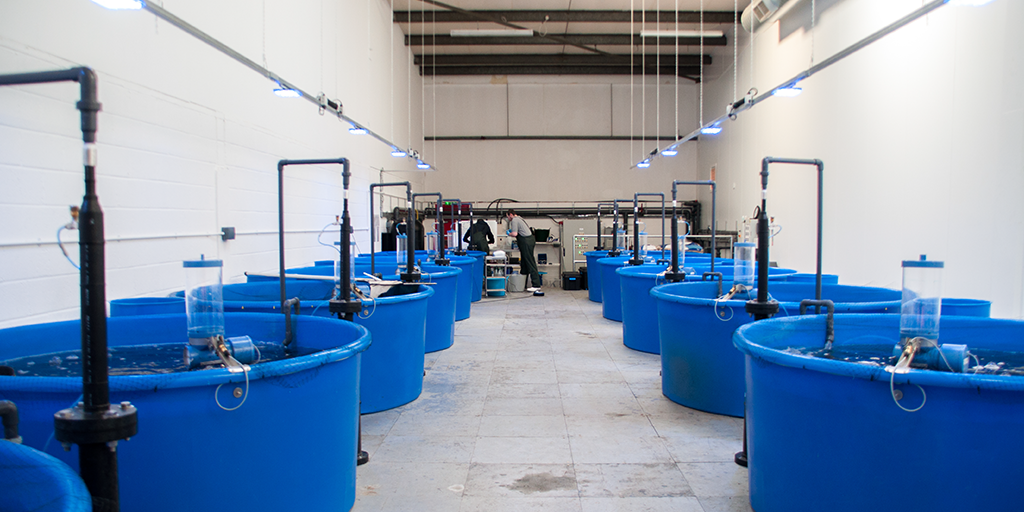
The 12 tanks full of tilapia, where the wastewater from the fish gets captured in order to use it as the nutrient source for the plants. Photo credit Mandy Zammitt.
Then, we pump that water into a room where we have our 10 vertical layers of hydroponic growing. There, the roots of the plants absorb the water, taking the waste nutrients out. They’re cleaning the water for the fish, and then the whole system continually recirculates. Because the water goes back to the fish, it means we don’t use any pesticides in our production either.
So basically, we feed the fish, the fish poo, we take the wastewater from the fish farm, we use that as the nutrients for the plants, and the plants clean the water for the fish.
We can’t continue to farm the way we’ve been farming to feed a world that’s changing the way it’s changing now. Tweet This Quote
And you don’t use any soil?
K: There’s no soil used on this farm at all. The plants get all the nutrients they need directly to their roots in the water. We use a number of different growing media on the farm. Most of the baby greens are actually grown on a recycled carpet material that is made specifically for agriculture.
How big is this farm?
K: This building has a footprint of 600 square meters, but because of the way we’ve got our vertical stacks in this room, we’ve actually got almost 800 square meters of growing space.
Can you tell us what you’re growing in this room right now?
K: In this room right now, we’ve got a selection of salads, herbs, and micro greens. We’ve got our fantastic micro-coriander; it’s got a really lovely flavor. Further down, we’ve got sunflower shoots, micro-radish, and micro-mustard growing. Up above me, we’ve got some baby kale, and there’s some Thai basil and some more traditional basil growing right at the top. At the other side, we’ve got pea shoots, baby watercress, and baby mixed salad growing – among other things.
How do you decide what grows here and why?
K: The things that grow really well in this aquaponic system are leafy green plants. That’s because the wastewater we get from the fish is really high in nitrates, and that’s the kind of fertilizer you need for really good leafy green growth. The other thing is we want to focus on crops that don’t need much space because we want to fit as many layers in the farm as we can. We also want to grow products that have a really quick growth cycle, so we can get our maximum yield from this space over the course of a year.
Where does the produce go when it’s ready?
K: The produce that’s growing on this farm is sold to local customers across London. You can buy our salads in stores like Whole Foods and online through Farm Drop. We sell directly to a number of restaurants and retailers. We also work with a distributer called First Choice Produce that goes out to restaurants and hotels across London. The fish goes to the same customers, too.
The really exciting thing about urban farming at the moment is that nobody’s cracked it. Tweet This Quote
What do people get wrong about aquaponics? What do you think are some misconceptions?
K: I think the reality is that a lot of people don’t really know how their food is grown at the moment. People may have this idealized vision that a nice old man farmer has grown all their food in a field in the sunshine. Yes, that’s how some of our food is produced, but also – especially in this country – a lot of our food is already produced hydroponically using good, efficient technology. It’s just being done in greenhouses in Holland, Italy, and Spain.
So when people come across our type of farming, they’re often surprised at the technology. But once we explain how that fits into the bigger system and once they’ve tasted how delicious the greens are, people can really see the benefits of farming in this way.
I’d like to rewind a minute and hear how GrowUp started. How did you meet your co-founder Tom, and what’s the evolution from then to where you are now?
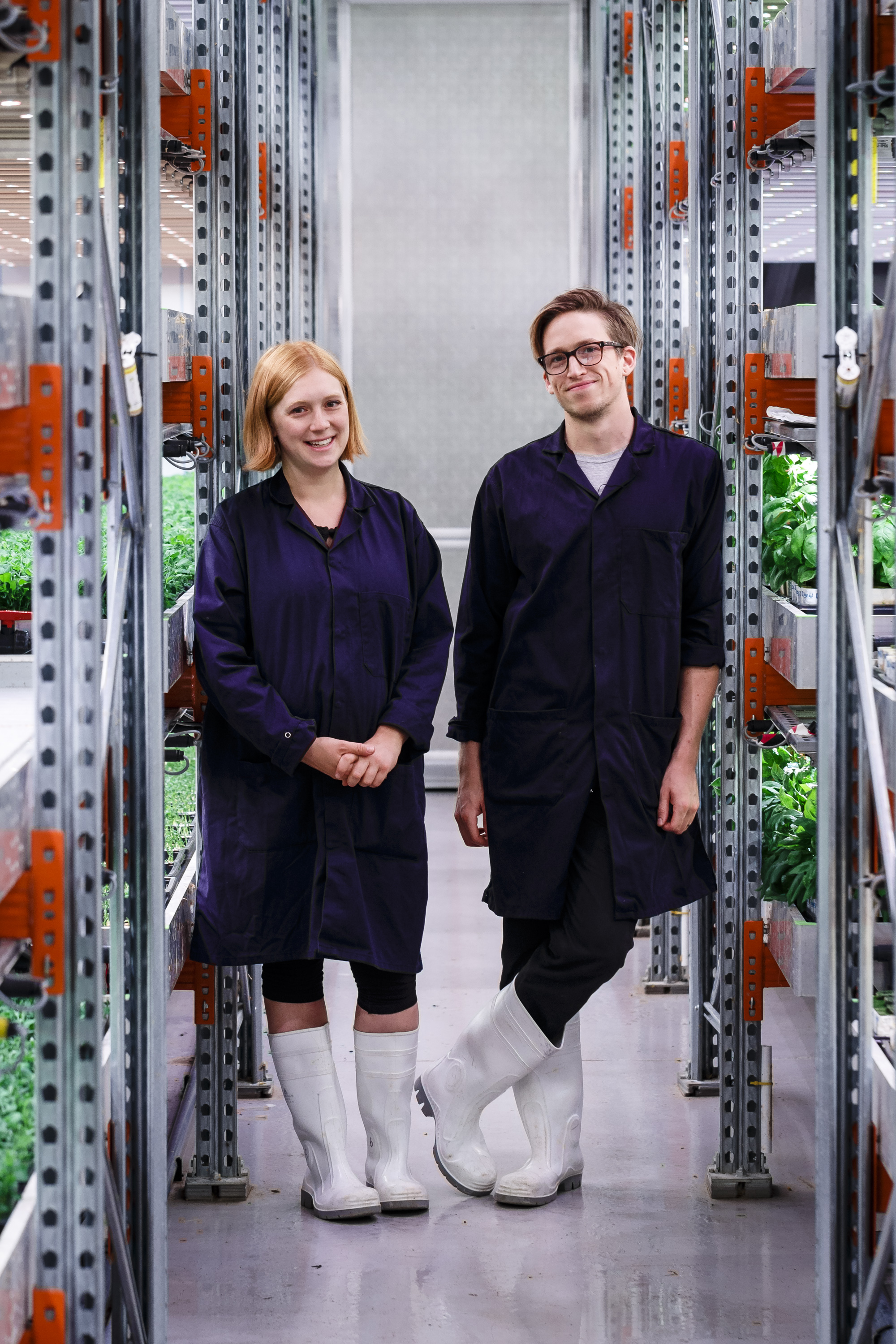
Co-founders, Kate Hofman and Tom Webster. Photo credit Miles Willis.
K: Tom and I set this business up about four years ago because both of us felt like there was an opportunity to bring commercial urban farming to cities in the U.K. and really have an impact. Not just on the food that we feed people in cities, but how we create jobs for people here, too.
We wanted to build a farm that showed how it was possible to grow delicious, sustainable and local food for people, to create meaningful jobs, and to help drive down the environmental impact of feeding people in cities.
In what ways is job creation core to your mission?
K: We wanted to create a company that used urban farming as a way of creating meaningful jobs for people. From a social and economic perspective, giving people the opportunity to train and learn a skill, feel part of a company, and get meaning from a job is so important.
So, we work with a local recruitment charity. We hire young people from the area who don’t necessarily need to have any experience in urban farming. Then, we help them with the skills, the training, and the confidence they need to be part of our team and to ultimately be able to build a career in this industry.
What have been some of the hardest obstacles along the way?
K: It’s always hard to raise the right money that you need for a business. We had to work on identifying the right technical partners to work with, the right space to move into, and all along the way, we’ve been doing things for the first time. So we’ve had to work with different stakeholders and different authorities – both local and national – to make sure we’re meeting all the regulatory requirements, but also so they really understand what we’re doing.
For someone who never thought they would start their own business, how do you continue tackling the food sector, which is a titan of an industry? What keeps you going?
K: I think the brilliant thing about food is it’s something everyone can relate to. Everybody’s got their own favorite food, they’ve got their favorite way of cooking, and they’ve got memories and stories from childhood of what food means to them. So it’s actually really easy to get people to reconnect with where their food comes from if you can tap into the right part of it.
It’s possible to build businesses that grow delicious food, create really good jobs, and still turn a profit. Tweet This Quote
Seeing the response we get from chefs when they tell us that our product is the best they’ve ever tried, that’s a fantastic motivator for me. And also really seeing how we’re inspiring other people to look at how they can have an impact on changing the food system – maybe through what they buy and what they eat, but also from setting up similar businesses in other places around the world.
As you know, one of the other Unreasonable Impact participants is running his own urban farm in London, too. How do you view competition in this space?
K: At the moment, what we’re really competing with is cheap, imported food that’s not being grown in a sustainable way. And I think the really exciting thing about urban farming at the moment is that nobody’s cracked it in the U.K. What we’re seeing is quite a lot of businesses focused on different parts of urban farming and using different technology, all with a similar aim of trying to create a more sustainable food system for the world.
It’s by having all of those different businesses that we’ll be able to come up with the best solutions, so we’re actually quite excited for other farms to be doing similar things in London or in cities across the world. It just increases the visibility of what we’re doing, it increases the viability of it, and it builds our reputation.
What do you hope to see in the world as a result of your work? In 50 years of urban farming, for example, what does the world look like?
K: There should be farms like this in cities everywhere across the world. Farming in this way makes total sense for certain products, and the technology’s only going to get cheaper and more efficient.
So when I think about what the food system looks like in fifty years, I’d love to see more food being grown like this, I’d love to see more people being trained and employed in agriculture, I’d love to see them have solid and reliable careers, and I’d also love to see people living in cities have really good access to food that’s been grown sustainably and locally.
Specifically, what does this mean for GrowUp Urban Farms? What’s next?
K: The next stage for us is to work on the development and design of our next farm – one that will have 10 times the footprint of this one. This will really allow us to increase our impact and build a model that can be rolled out or replicated across any city, anywhere. We want to be the world leader in this kind of farming and show that it’s possible to build businesses that grow delicious food, create really good jobs, and still turn a profit.
One final question, since I know you have a little one on the way. Do you think about the future of your business in a different way now that you’re having a baby?
K: Running my own business has always been less about being a hero entrepreneur and more about creating the right sort of work/life balance for me, for my business partner, and for our team. So at this stage in my life, I feel like that’s something that’s also going to become more important to think about. I guess it’s an exciting challenge that I’m looking forward to – seeing how I’m going to juggle having a baby at home as well as this big baby of a farm to look after, too.
This story is part of a series showcasing the entrepreneurs who participate in Unreasonable Impact, a partnership between Barclays and Unreasonable Group that supports high-growth entrepreneurs to create the jobs of tomorrow while solving some of our most pressing societal challenges. Join the movement on Facebook and Twitter.
This company participated in Unreasonable Impact created with Barclays, the world’s first multi-year partnership focused on scaling up entrepreneurial solutions that will help employ thousands while solving some of our most pressing societal challenges.


